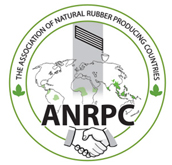According to the latest report by the Association of Natural Rubber Producing Countries (ANRPC) released for April, the NR short-term outlook for Southeast Asia’s natural rubber (NR) sector will be improving amid challenges of Covid-19 related disruptions in the demand and supply. It said that world supply during May 2021 is likely to remain low by matching with the average monthly supply during the three months from February to April 2021. However, the world supply is expected to improve in June 2021. Compared to May 2021, the production during June 2021 is expected to be 15.8% higher.
Related: ANRPC predicts short-term gain in NR prices
The off-season of NR supply, coinciding with the wintering of rubber trees, is expected to end by the second half of May in almost all the rubber producing countries, with variation across countries and across regions within each country. The world supply is expected to improve beginning from the last week of May on account of the seasonal factor.
Factors affecting supply
Nonetheless, the supply increase is expected to be marginal due to various factors, namely, the disruptions caused by a recent surge of Covid-19 cases in Thailand, India, Malaysia, Cambodia, and Sri Lanka have affected supply; farmers abstaining from physical activities including harvesting of rubber trees to observe the Muslim Ramadan fasting month, from 12 April to 12 May. This can have a bearing on the supply, especially from Malaysia, Indonesia, and southern Thailand, until mid-May, the report said.
Related: IRSG ties up with sustainable natural rubber platform to build up NR sector
Other significant factors that impact supply are the fungal leaf diseases that have affected around 600,000 ha of mature trees in Indonesia, Thailand, and Malaysia, and to a limited extent in Sri Lanka and India; the continuing labour shortage for reason that a large number of migrant workers from neighbouring countries have difficulty in returning to Thailand and Malaysia due to COVID-related restrictions; and poor maintenance of rubber holdings over the past few years have resulted in low yield.
Impact of India’s surge in Covid-19 cases
The second wave of Covid-19 has trimmed the outlook on the demand for NR from India, which records daily infected cases rising to more than 400,000. The country accounted for 46% of the global cases and 25% of the global deaths reported during the last week of April. However, the lower NR demand from India could be offset by the higher consumption expected in China, the US and Europe helped by the rapid economic recovery following the good progress achieved in the vaccination drive.
Related: Indian Rubber Board backs molecular biotech research for better rubber clones, yield
Meanwhile, NR prices are expected to receive the support of the crude oil market. The progress in the vaccination drive and the resultant renewed economic recovery momentum are expected to support the crude oil prices at least in the short term.
Shift to domestic sourcing on continued disruptions
The supply-chain disruptions caused by the continuing shortage of shipping containers, and the resultant shipment delay and supply uncertainty can compel a section of end-use manufacturing companies to increase their inventory of NR by deviating from the just-in-time strategy. Manufacturing companies might opt for domestic sourcing of NR, wherever it is possible, by offering a higher price rather than going for low-cost sourcing from overseas.
NR prices in the short term have the potential to improve, at least marginally, helped by the improved outlook on the demand, supply constraints, apart from the support of the crude oil market and the dollar. However, the continuing covid-19 infections in India along with the slow progress of the vaccination drive can put a cap on the demand growth as well as the recovery in prices. The anticipated rise in the supply, starting from June, can also weigh on the prices.

